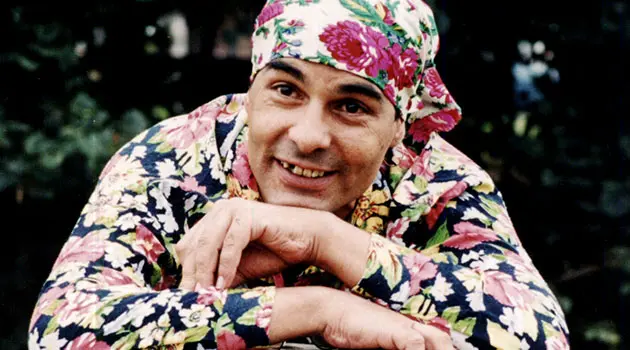The Romani activist, collector and researcher Jan Rác passed away on Friday, 28 May 2021. He was 64.
His close co-workers informed news server Romea.cz of his death. Mr Rác was born in Kraslice, Czechoslovakia, in 1957.
As a young man he apprenticed as a concrete technician in construction work. He would become known to the public as a Romani activist, as a collector, and as a researcher.
Mr Rác’s entire life was dedicated to studying the culture and history of Romani people. His passion for collecting was part of that avocation.
Since the age of 20 he had been collecting books on Romani subjects and Romani literature. He also collected musical instruments and recordings, products handmade by Romani craftspeople, and works of art.
He worked with the Museum of Romani Culture in Brno, to which he donated a large part of the collection that was his life’s work. “For decades he had been perpetually creating his collection documenting Romani culture, and he donated a significant portion of it one year ago to the Museum of Romani Culture in Brno,” museum director Jana Horváthová told news server Romea.cz.
In 1998 Mr Rác established the Association for Romani Children and Youth of the Czech Republic, which was active not just in the Zlín Region, but in other regions of the country. He served for a time as a member of the Czech Government Council on Romani Minority Affairs and chaired the Government Committee for Collaboration with Municipalities.
In 2002, during the KHAMORO World Roma Festival, he organized an exhibition called “Mirikle”, drawing from his own collection of decorative Romani beads. He also organized a unique exhibition 12 years later in Zlín, where he spent practically his entire life, about “Old Gypsy Postcards from the 19th and 20th Centuries” (Staré cikánské pohlednice z 19. a 20. století).
Some of the postcards from his private collection that especially stood out at that exhibition were from Hungary, Poland, Slovakia, Uzhhorod (now in Ukraine) and the former Yugoslavia. He also contributed artefacts to the exhibition “In Honor of Eva Davidová” (Pocta Evě Davidové), held during the 20th annual KHAMORO festival in Prague.
Mr Rác had been friends for many years with that particular ethnographer and photographer who, just like him, dedicated her life to documenting Romani culture and tradition. Jelena Silajdžić, the producer of the KHAMORO festival, has recalled him for news server Romea.cz as follows: “Jan Rác was the symbol of KHAMORO.”
“I remember how proudly he used to stand with his Romani flag at the head of the defilé march by all of the festival’s performers. We knew each other for 22 years and became really good friends during that time,” she told Romea.cz.
“He was unequivocally a Romani intellectual and an exceptional human being. When I learned that he has left us forever, a piece of my heart went with him,” Silajdžić told news server Romea.cz.
Mr Rác dedicated his life to more than just culture and history, though. He was also involved in humanitarian work.
When extensive flooding struck Slovakia in 1998, he organized deliveries of aid to the Romani settlements there. One year later his charity and humanitarian activity relocated into the Pätorácke and Zabijanec settlements in the village of Rudňany and to the Romani school in Uzhhorod, Ukraine.
Years ago, speaking in an interview for the magazine Romano voďi, he described his relationship to his Romani identity as follows: “I have great respect for the Romani flag. The Indian man who designed it must have been a real genius.”
“He drew, in an absolutely simple way, in three symbols, all of the anguish the Roma have been through.Think about it: the heavens, the earth, and a wagon wheel,” he said.
“For centuries the Roma are looking for a sky beneath which they might be able to calmly rest. The Roma are wandering, looking for a bit of earth that they might be able to calmly cultivate and then harvest without being scolded,” he said.
“Then there’s the wheel… What else could better express the ceaseless pilgrimage of the Roma, their search not just for material things and a way to make a living, but also their spiritual journey through their Romipen and their own humanity?” Mr Rác mused during the interview.
In 1999, he made an appearance in a cycle of documentary films called “Děti okamžiku” (“Children of the Moment”). He also worked as a connoisseur of literature and as an editor.
In 2012 he published the book “Romské osady” (Romani Settlements), and a year later produced a publication of works by the academic painter Jaroslav Jeřábek dedicated to Romani subjects called “Studijní kresby – Cikáni očima českého malíře Jaroslava Jeřábka / Le študentengere kipoši – o Roma jakhenca, čechiko čitrošis Jaroslav Jeřábek” [Studio Drawings: Gypsies through the Eyes of the Czech Painter Jaroslav Jeřábek]. Just before he passed away he completed an autobiographical story, “How I Was Born on a Train” (Jak jsem se narodil ve vlaku), which has yet to be published.

